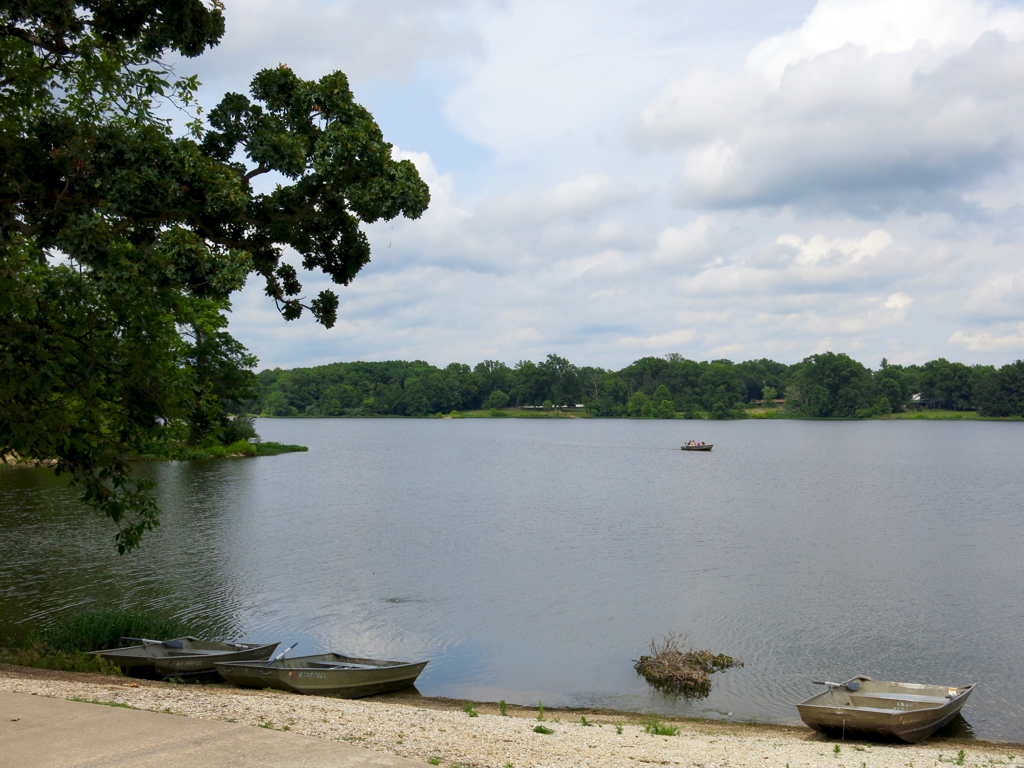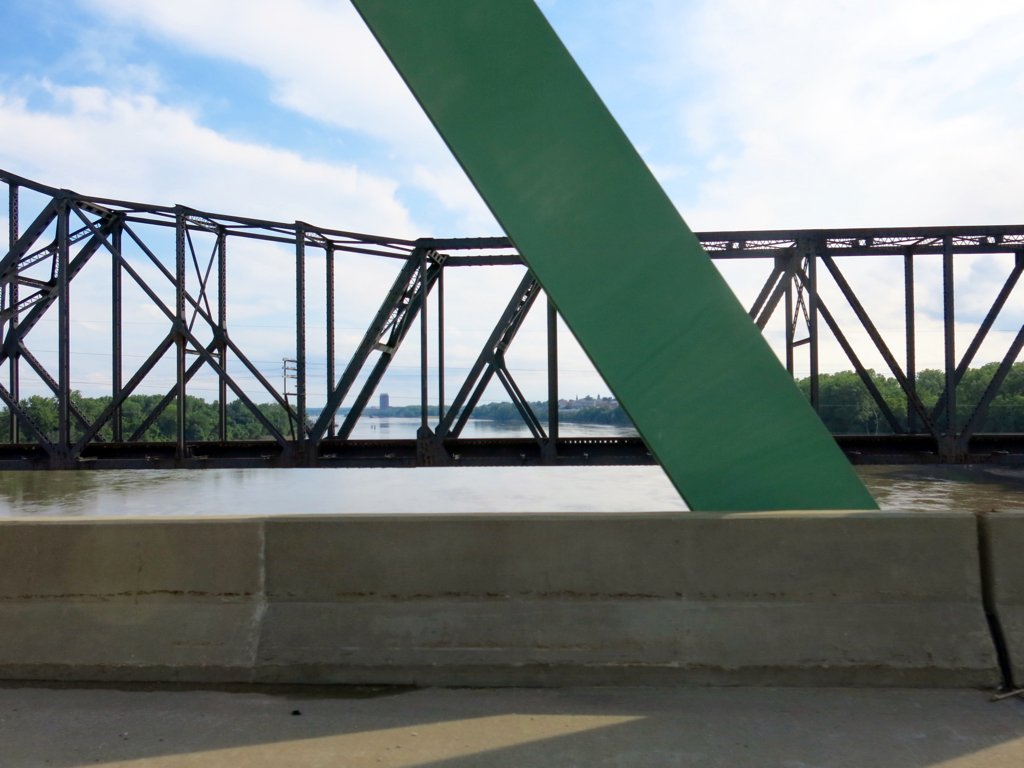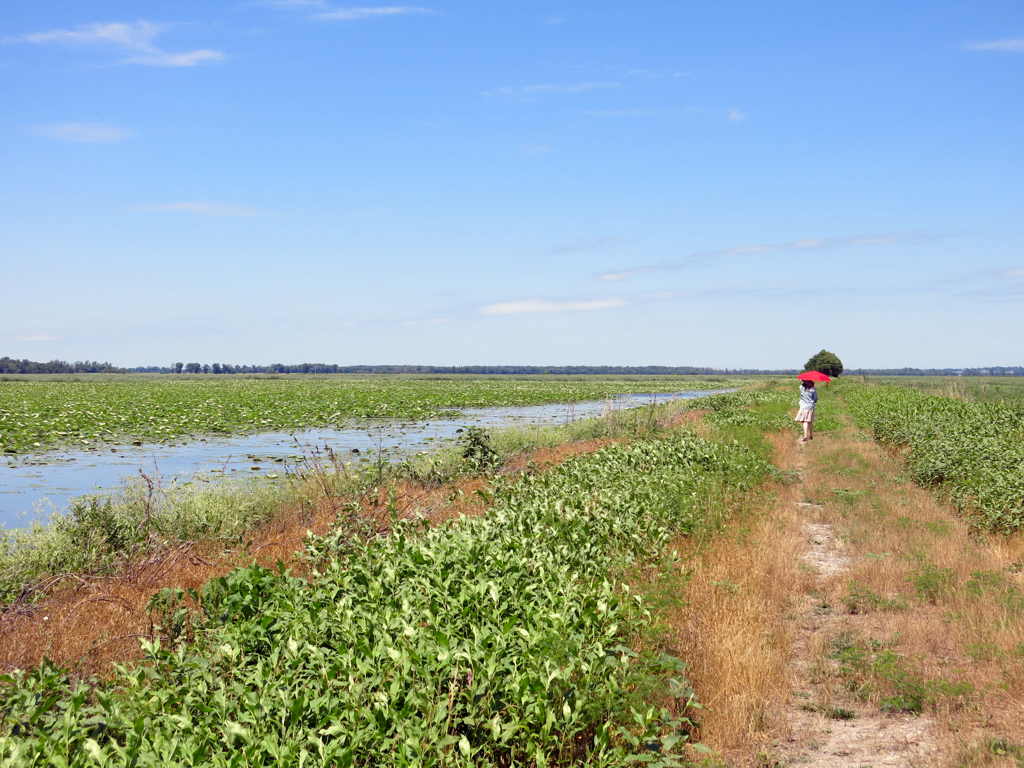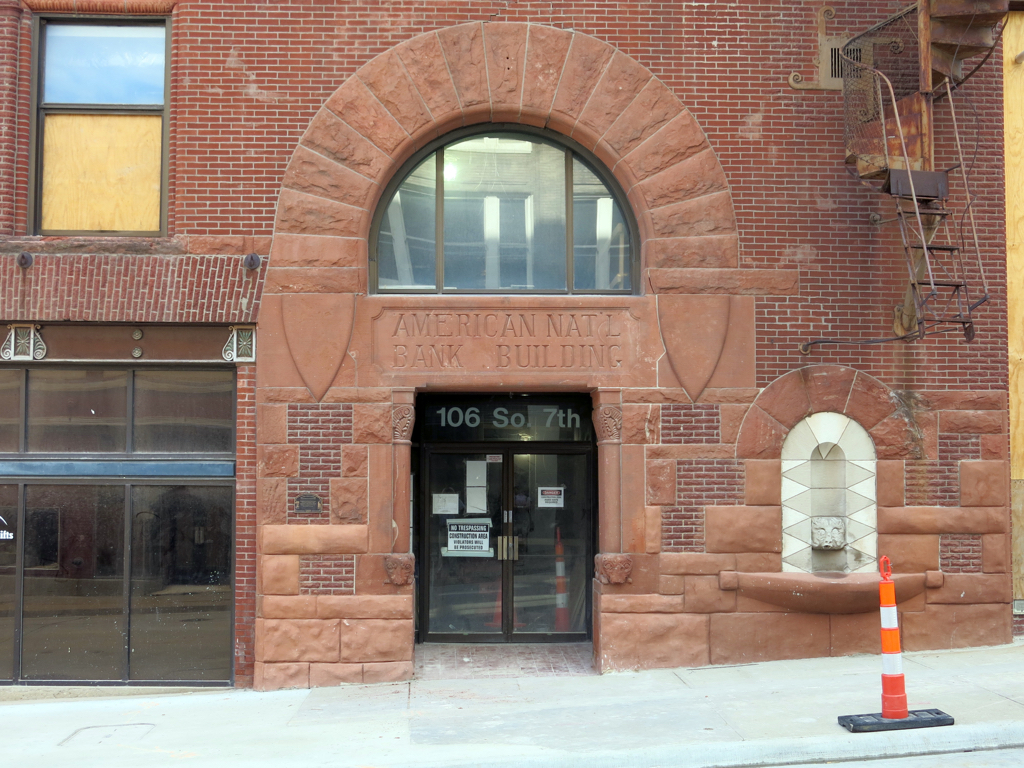Another late start this morning. Both of us had vivid dreams last night. I can’t remember what happened in my dreams; I used to write detailed notes of my dreams, but gave it up a long time ago because dream narratives are usually confused and ridiculous, the characters strange and inconsistent. Reality is already confused and ridiculous and strange and inconsistent, there’s no need to add to the trouble. Nevertheless, this morning I knew I had had vivid dreams, and I was glad to let the sunlight drive them out of my head.
In Nevada and Wyoming, the interstate highway gives you the best view of the landscape, generally showing you pastoral idylls and hiding from view the huge mining operations and industrial plants. But once you get as far east as Missouri, the interstate highway shows you the large industrial plants and huge warehouses; industries want to be close to the interstate, and you see only occasional woodlands, and fields of corn or soybeans.
We past Columbia, the state capitol, and drove south through exurban housing developments to Little Dixie Lake Conservation Area. A map showed a trail going all the way around the lake, and we started walking along it. It started out as a broad trail which had been mowed through the grass and plants growing under the second growth trees, and as it wound away from the boat landing it slowly narrowed until it was no more than a path. It wound along near the shore of the lake, and tract houses on their one- and two-acre lots were sometimes visible through the thousand foot wide woodland. The beauty we found was in the trees and plants and shoreline immediately in front of us; the broad views were unremarkable.
A light breeze blew off the water and kept us cool. We kept coming across Great Blue Herons sitting like sentinels on snags out in the water. We had been listening to an audiobook of Homer’s Odyssey, and when I saw the herons I thought about the eagles Zeus sent in answer to Telemachos’ prayer:
“So spake Telemachus, and in answer to his prayer did Zeus, of the far borne voice, send forth two eagles in flight, from on high, from the mountain-crest. Awhile they flew as fleet as the blasts of the wind, side by side, with straining of their pinions. But when they had now reached the mid assembly, the place of many voices, there they
wheeled about and flapped their strong wings, and looked down upon the heads of all, and destruction was in their gaze. Then tore they with their talons each the other’s cheeks and neck on every side, and so sped to the right across the dwellings and the city of the people.” (trans. S. A. Butcher)
Halitherses, who excelled his peers in his knowledge of birds, interpreted this augury for Telemachos: the suitors who took advantage of Odysseus’ absence to try to force his wife Penelope into marrying one of them — these men would meet certain doom. The young men dismissed Halitherses, just as you now no doubt are dismissing him, saying that the actions of birds have no meaning. Of course the actions of birds have no meaning, other than finding food and procreating; the same may be said for human beings, our lives are nothing more than the attempts of our DNA to mindlessly preserve itself. The Great Blue Herons standing like sentinels had no message for me or for anyone. They just reminded me of my father, who liked Great Blue Herons so much.
We walked for half an hour, then it was time to turn around. I saw some sassafras seedlings, and cut a twig for Carol. “Mm,” she said, smelling it, “what is that?” “Sassafras,” I said. She wanted to know what you can do with it, and I said you can make tea, which supposedly has very mild narcotic effects. Upon hearing that, I think she dropped her sassafras twig. I chewed on mine for a while; I found the taste very refreshing, but I didn’t notice any narcotic effects.
The rest of the drive was uneventful and not particularly scenic. I craned to see the Missouri River as we crossed over in west of St. Louis, but mostly what I saw was the guardrail and bridge abutments and a little bit of water as we sped across.




